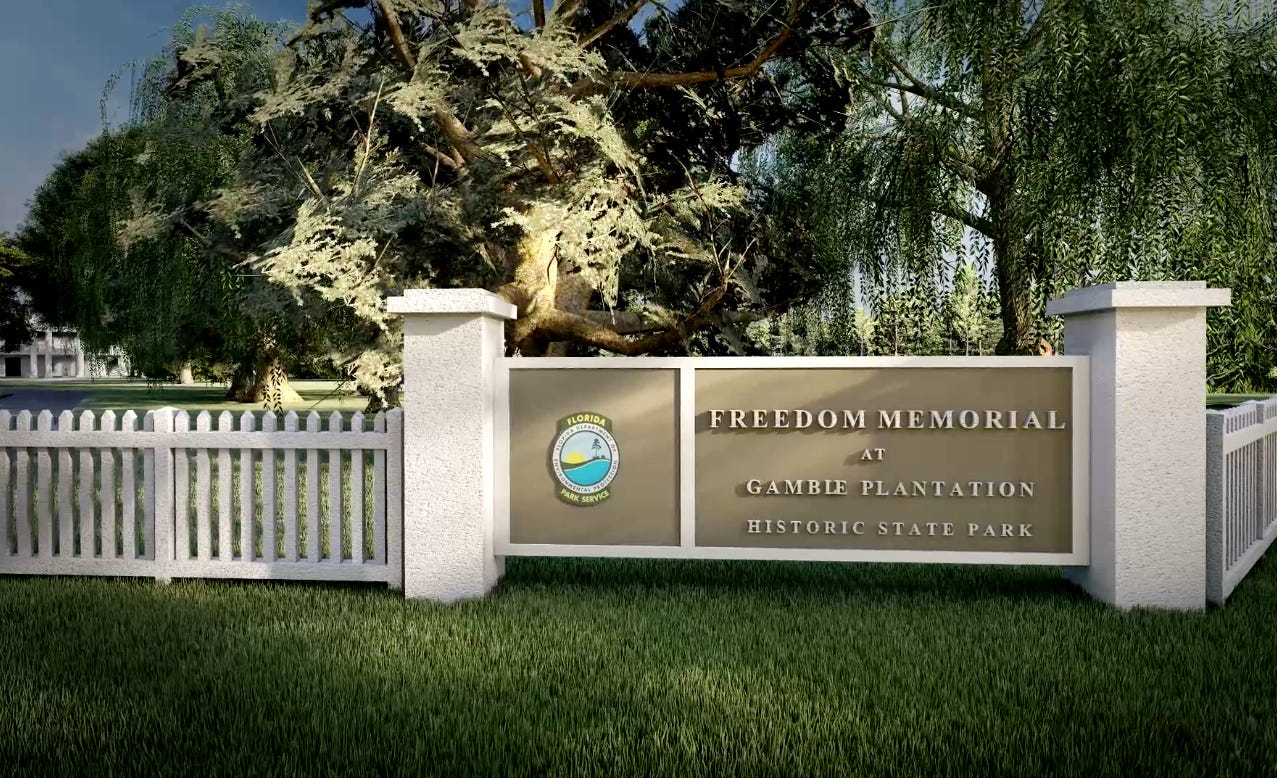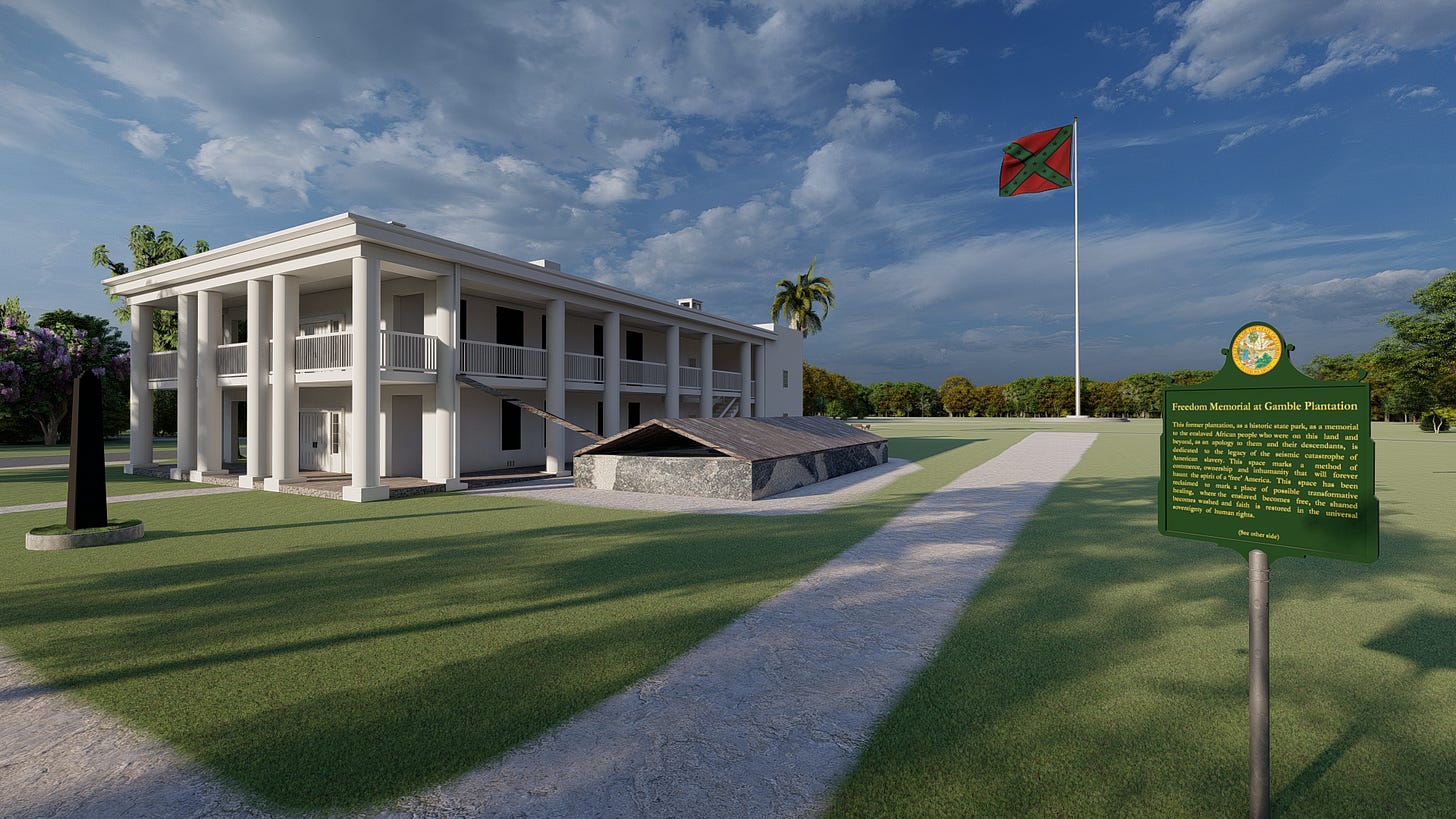Art as a catalyst for recasting our nation's racial history
John Sims has spent two decades confronting this country's Confederate iconography and exclusionary history. His creativity suggests a path forward toward a national racial healing.

Over the weekend, I watched a recorded re-broadcast of John Sims’ “(Di)Visions of America,” developed during his residency at The Ringling Museum. It’s a timely piece that provides not just creative food for thought, but an impetus for action as a new administration approaches the thorny issues that have provoked such division in this country.
In this culmination of his 20-year multi-media “Recoloration Proclamation” project, which pushes back on Confederate iconography, Sims, a conceptual artist, writer and social justice activist, examines the fear, unrest and protest ignited by the confluence of the Covid-19 pandemic, American policing and the rise of white supremacy.
It’s a trilogy that begins with an unseen gamer blasting spikey Coronavirus cells in an imagined “Korona Killer” video game and continues with three community members reading poignant and pain-filled letters to unseen recipients — Dr. Lisa Merritt, to a patient who has died of Covid-19; Sims, to the police; and Chandra Carty, to a grandfather who worked as a slave on the Gamble Plantation in Manatee County.
It finishes with an animated reimagining of that plantation, transformed into a memorial to the Black slaves who worked and died there, rather than as a Confederate honorific. A soundscape from Sims’ “AfroDixieRemixes,” a rewrite of the Confederate anthem “Dixie in the Black music lexicon, serves as the audio backdrop.

The presentation serves as the catalyst for an exhibition and four-part symposium series at the University of South Florida’s Contemporary Art Museum focusing on the power, politics and activism around public monuments and memorials. (You can take virtual tour of the exhibition here.) Sims has also launched a petition urging legislators to repeal antiquated laws on Confederate flags and refashion the Gamble Plantation, which is a state park, to tell a more inclusive and honest story about its history.
Sim’s artwork, as well as his opinion pieces in publications like the Tampa Bay Times, are intentionally designed to provoke not just an emotional reaction, but social action. By providing examples of inspiring possibilities, art can move the needle on cultural issues beyond the “conversation” level. But, as Sims found when his 2004 project in Gettysburg failed to sustain a national discussion around Confederate flags, it’s not always enough on its own.
“Sadly, what it often takes is something like those nine people that died in the AME church or George Floyd,” he said. “At some level, it takes critical loss and death to get to get folks to move on an emotional level. Art pushes that, but it becomes explosive when you’re in a context which heightens the emotional possibilities. And that’s where we are right now.
“If you can reach people at the core of their humanity, there’s very few defenses to that. It makes my work more resonant and provides some direction about ways to move forward, as opposed to being just reactive.”
When only a certain segment of a community controls how history is presented and framed, some stories are elevated and others suppressed, Sims said. Historical markers, which reflect a community’s values, moral compass and ideas of justice, are a good place to advance a more even-handed representation of history and initiate a national healing over slavery.
For example, Sims reimagines an historical marker at the redubbed “Freedom Memorial” at the Gamble plantation — which has been principally touted for providing secret refuge for the Confederate Secretary of State Judah P. Benjamin after the Civil War — as “a memorial to the enslaved African people who were on this land and beyond, as an apology to them and their descendants, dedicated to the legacy of the seismic catastrophe of American slavery.”
Recently he reached out to Florida House Representative Tommy Gregory (R-Dist. 73), sharing the “(Di)Visions of America” animation, and was encourage by the response of the legislator, who is considering introducing a bill to address some of the issues in Sim’s petition.
“Things like that, where the art moves beyond the conversation to create inspiration for people to do stuff, people that might not agree with you on everything, that’s the hope,” Sims said. “I’m a radical and he’s a Republican, but he was able to take something away from the art that moved him.”




Excellent article about this wonderful program. We saw it and it was a very effective way to shed light on the sins of the past as well as our need to face up to what happened and what is still happening. It is a shame that the Gamble Plantation can not recognize its history.
You keep taking us by the hand and leading us in the right direction. Thanks Carrie.